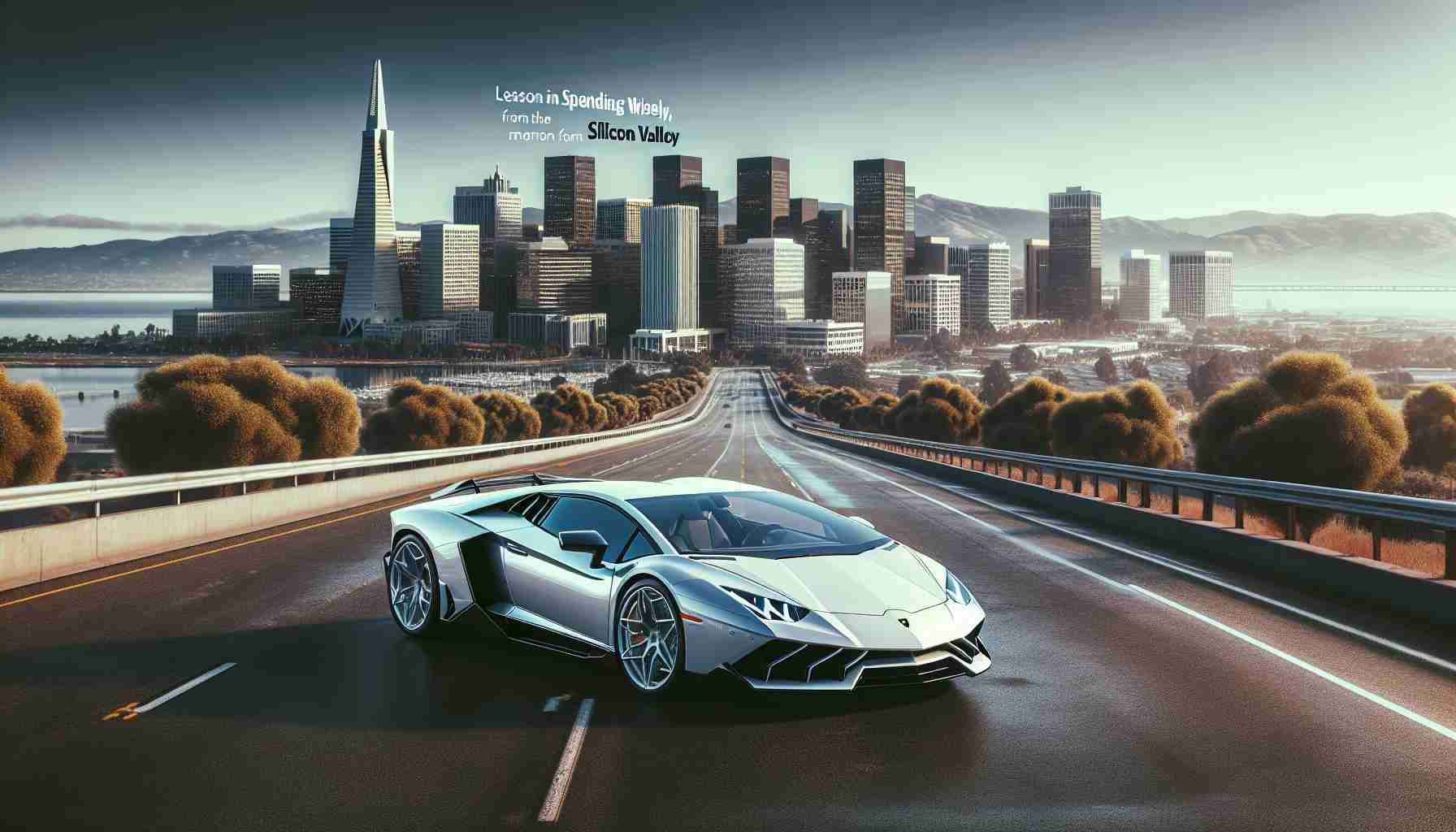
- Weigh luxury versus financial responsibility: A $250,000 Lamborghini Huracán intrigues a wealthy buyer, prompting a deeper financial analysis.
- Adopt Dave Ramsey’s rule: Keep total vehicle value below 50% of annual income—this purchase surpasses the suggested limit.
- Apply the “Burn the Money” Test: Can you afford to “lose” the car’s value without impacting your financial stability?
- Address priority debts: $739,000 mortgage at 6.74% interest should be prioritized before splurging on luxury items.
- Evaluate purchase motivation: Is the car for personal satisfaction or external validation?
- Conclusion: Luxury purchases like a sports car are viable only after securing financial stability.
Standing at the crossroad of luxury and practicality, a 39-year-old Silicon Valley millionaire contemplates a question that blends ambition and financial savvy: should he indulge in a $250,000 Lamborghini Huracán? With a comfortable net worth of $3.66 million and a robust income, he turned to the seasoned voice of reason—financial expert Dave Ramsey.
Rather than dismissing the purchase outright, Ramsey delved into a set of considerations designed to illuminate the mind of the affluent but prudent buyer. He shared his personal philosophy: the total value of all vehicles one owns should remain under half of one’s annual income. For our would-be luxury car owner, the Lamborghini stretches beyond this threshold—a cautionary signal in Ramsey’s view, but not a deal-breaker.
Enter the “Burn the Money” Test. This eye-opening exercise asks, “If you watched that money go up in flames, would your life change?” For a man of substantial means, a quarter of a million dollars disappearing wouldn’t spell ruin, but Ramsey reminds us that luxury cars depreciate faster than they accelerate.
More pressing to Ramsey was the issue of the caller’s $739,000 mortgage ticking away at 6.74% interest. Prioritize settling this substantial debt, Ramsey advised, before accumulating toys that merely gather metaphorical dust.
Yet, the heart of the matter lay a penetrating question: are you buying the car for yourself or to turn heads? If the joy of ownership would remain undimmed even in solitude, perhaps the purchase is warranted. Otherwise, reconsider before style eclipses substance.
In essence, a flashy car can be a feasible luxury, but only when the road to financial stability has been smoothly paved.
Luxurious Indulgence or Financial Finesse? The Real Deal Behind Splurging on a Lamborghini
How-To Steps & Life Hacks for Wealthy Car Buyers
Purchasing a luxury car like the Lamborghini Huracán isn’t just about financial capability—it’s about aligning the purchase with long-term goals. Here’s how to ensure a luxury investment is well-considered:
1. Assess Financial Health:
– Net Worth Check: Ensure your net worth comfortably supports the purchase. A sum like $3.66 million provides a strong foundation, yet diversifying assets remains crucial.
– Income Stability: Verify that current and projected income can sustain ownership costs, including insurance and maintenance.
2. Set Personal Criteria:
– “Burn the Money” Test: Visualize losing the purchase amount unexpectedly. Would it impact your quality of life? If yes, think twice.
3. Evaluate Debt Obligations:
– Mortgage Assessment: Prioritize higher interest debts, like a $739,000 mortgage at 6.74%, to avoid long-term financial strain.
4. Define the Purpose:
– Decide whether the purchase is for personal joy or external validation. Authentic personal pleasure justifies the luxury.
Real-World Use Cases
– Brand Ambassadors & Influencers: Owning a luxury car can enhance personal branding and secure high-profile gigs.
– Business Networking: A Lamborghini could open doors to exclusive events and networks but ponder if these connections are worth the cost.
Market Forecasts & Industry Trends
The luxury car market is expected to grow steadily, driven by increasing disposable incomes and desire for exclusive status symbols. Reports by Allied Market Research forecast a compound annual growth rate (CAGR) of 5.2% from 2021 to 2027.
Reviews & Comparisons
– Lamborghini Huracán vs. Ferrari F8 Tributo: The Huracán offers more aggressive design and brand prestige, while the Ferrari counters with precision engineering and agility.
– Consumer Insights: Owners often rave about performance yet note substantial depreciation and high maintenance costs.
Controversies & Limitations
– Depreciation: High initial depreciation rates are significant; vehicles can lose up to 20% of their value within the first year.
– Hidden Costs: Beyond the sticker price, repairs and parts are costly, often reaching thousands per annum.
Features, Specs & Pricing
– Engine: 631 hp, 5.2 L V10, offering unmatched speed and performance.
– Price Range: Base model starts around $250,000, exclusive of customizations.
Pros & Cons Overview
Pros:
– Statement of wealth and status
– Exhilarating driving experience
– Possibility of limited edition models appreciating in value
Cons:
– Rapid depreciation
– High insurance premiums
– Limited practical use in everyday scenarios
Actionable Recommendations
– Set a clear budget, not exceeding 50% of your annual income.
– Consider leasing as a short-term strategy to experience the luxury without long-term commitments.
– Research financing options to leverage low-interest rates or utilize investment vehicles to offset costs.
For further financial advice and tools, visit Ramsey Solutions.
Implementing these strategies can ensure a luxury vehicle purchase doesn’t extend beyond your financial grasp, maintaining a balance between indulgence and fiscal responsibility.



